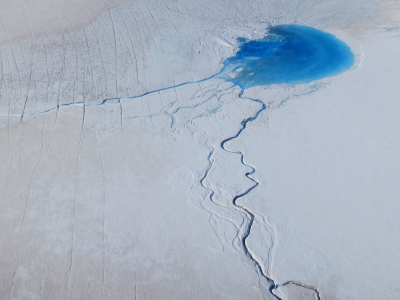
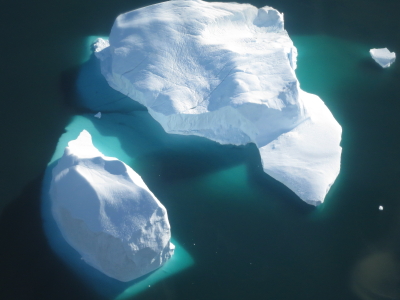
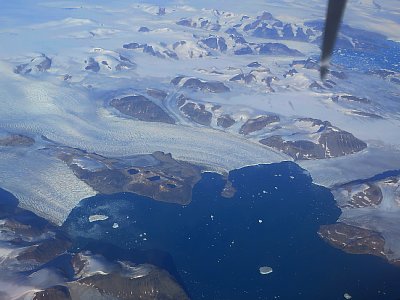
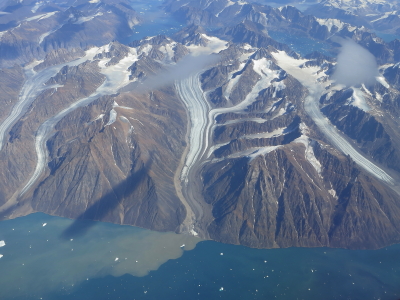
Ice sheet, glaciers, icebergs... ice in Greenland is melting and draining into the ocean.




Ice sheet, glaciers, icebergs... ice in Greenland is melting and draining into the ocean.
Greenland Ice Sheet is the earth's second largest ice mass, which
holds water volume equivalent to 6 m of sea level rise. The ice sheet
is currently losing mass at a rate increasing since the beginning of
21st century. The mass loss of the ice sheet is attributed to
increasing surface melt and accelerated ice discharge from outlet
glaciers. Rising temperature is the key driver of the melt increase,
but accurate evaluation of surface mass balance over Greenalnd is
still difficult because field data is lacking and not uniformly
distributed. Recent observations have shown many glaciers are speeding
up and discharging more ice than before. However, the mechanism of the
speed up is not well constrained.
Qaanaaq –study site–
Publications
To quantify the current ice mass loss in Greenland and better predict
its future, we have established a research project since 2011. We set
a relatively small drainage basin as a study site and measure three
important processes which control ice mass budget, accumulation, melt,
and calving flux. The results of the measurements are used to evaluate
the ice mass loss of the basin as well as to understand details of the
mass balance and dynamic processes. Our goal is to provide accurate
figures of current and future ice mass change in Greenland based on
detailed field and satellite observations as well as numerical
modeling.
This project is running under GRENE Arctic Climate Change
Research Project. GRENE is a Japanese initiative to investigate
rapidly changing Arctic and its influence to global environment. Our
Greenland project is effort of Japanese snow and ice research
community to contribute the study goal of GRENE. Additional funding is granted by JSPS KAKENHI Grant Number 26550001.
Field campaign 2012
Field campaign 2013
Field campaign 2014
Field campaign 2015
Project members
Meeting
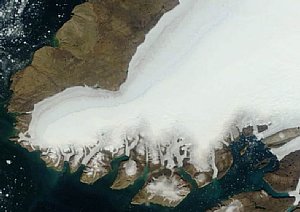
Satellite image of the study site, Qaanaaq in the northwestern Greenland
- Tsutaki, S., S. Sugiyama, D. Sakakibara and T. Sawagaki. 2016. Surface
elevation changes during 2007-2013 on Bowdoin and Tugto Glaciers,
northwestern Greenland. Journal of Glaciology, 62(236),
1083-1092.
[Open access]
- Ohashi, Y., T. Iida, S. Sugiyama, and S. Aoki. 2016. Spatial and temporal variations in high turbidity surface water off the Thule region, northwestern Greenland, in press, doi:10.1016/j.polar.2016.07.003.
[publisher site]
- Saito, J., S. Sugiyama, S. Tsutaki and T. Sawagaki. 2016. Surface elevation change on ice caps in the Qaanaaq region, northwestern Greenland. Polar Science, in press, doi:10.1016/j.polar.2016.05.002.
[publisher site]
- Machguth, H. and 31 others. 2016. Greenland surface mass balance observations from the ice sheet ablation area and local glaciers. Journal of Glaciology, 1-27, doi:10.1017/jog.2016.75.
[publisher site]
- Podolskiy, E., S. Sugiyama, M. Funk, R. Genco, S. Tsutaki, F. Walter, M. Minowa, M. Ripepe. 2016. Tide-modulated ice flow variations drive seismicity near the calving front of Bowdoin Glacier, Greenland. Geophysical Research Letters,
43, doi:10.1002/2016GL067743.
[publisher site]
- Sugiyama, S., D. Sakakibara, S. Tsutaki, M. Maruyama and T. Sawagaki. 2015. Glacier dynamics near the calving front of Bowdoin Glacier, northwestern Greenland. Journal of Glaciology, 61(226), 223-232.
[PDF]
- Sugiyama, S., D. Sakakibara, S. Matsuno, S. Yamaguchi, S. Matoba and
T. Aoki. 2014. Initial field observations on Qaanaaq Ice Cap in northwestern
Greenland. Annals of Glaciology, 55(66), 25-33.
[PDF]